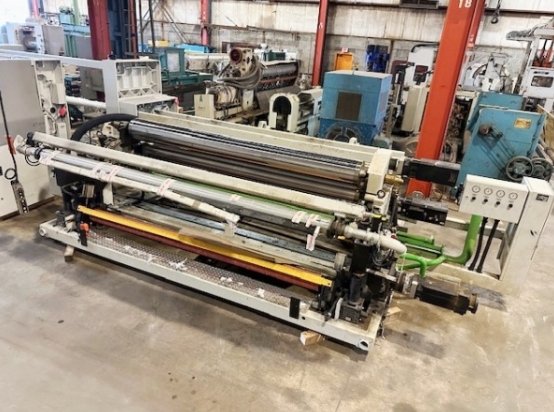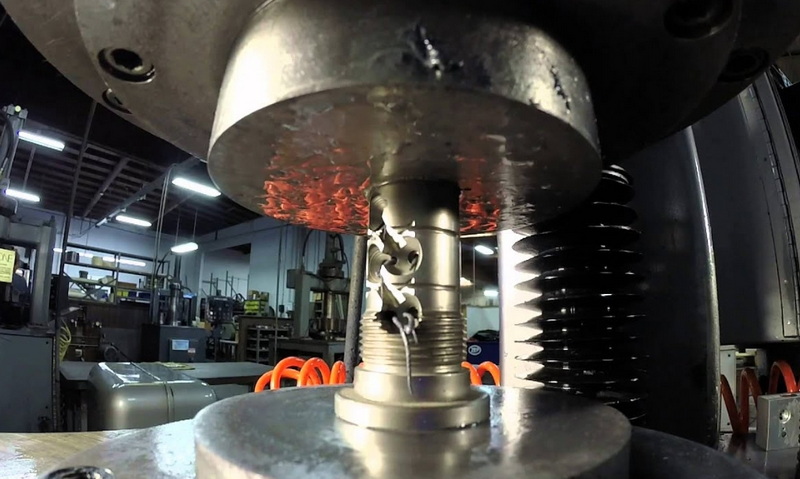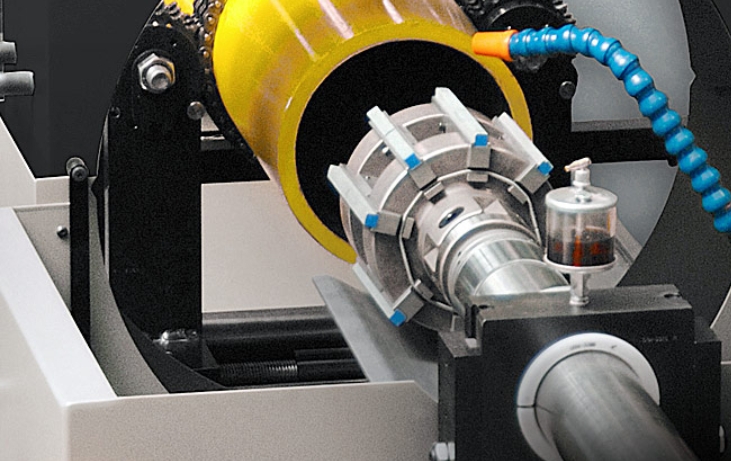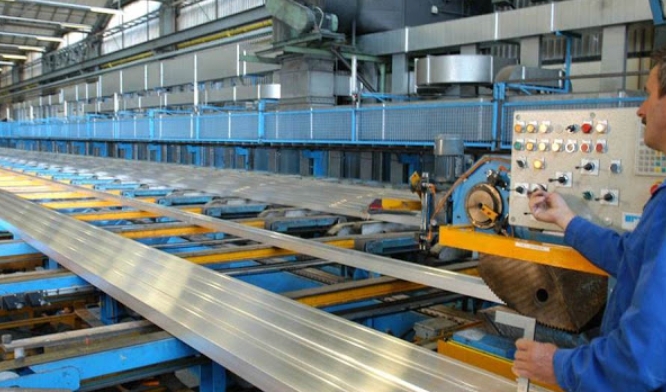Content Menu
● The Role of Extrusion Packaging Equipment in Modern Packaging
● Key Drivers of Innovation in Extrusion Packaging Equipment
>> Sustainability and Environmental Regulations
>> Customization and Product Differentiation
>> Automation and Digitalization
● Latest Innovations in Extrusion Packaging Equipment
>> 1. Advanced Multilayer and Co-Extrusion Technologies
>>> Triple Bubble® Technology
>>> 5-Layer and Multi-Layer Co-Extrusion Lines
>> 2. Sustainable and Biodegradable Material Integration
>>> Bioplastic and Compostable Coatings
>>> Recycled Polymer Processing
>> 3. Automation, AI, and Smart Manufacturing
>>> AI-Driven Process Optimization
>>> Advanced Human-Machine Interfaces (HMI)
>>> Automated Thickness and Quality Control
>> 4. Energy Efficiency and Resource Optimization
>>> Low-Friction Screws and Optimized Barrels
>>> Material Waste Reduction
>> 5. Customization and Flexible Production
>>> Modular and Versatile Machine Designs
>>> Oscillating Haul-Offs and Calibration Cages
>> 6. Industry 4.0 Compliance and Digital Integration
>>> Smart Manufacturing and Connectivity
● Market Trends and Industry Impact
>> Growth and Investment
>> Strategic Partnerships and Collaboration
>> Regional Developments
● Case Studies: Real-World Applications
>> Food Packaging
>> Medical and Pharmaceutical Packaging
>> Consumer Goods and E-Commerce
● Challenges and Future Directions
>> Material Compatibility and Processing
>> Cost and Investment
>> Regulatory Compliance
>> Future Innovations
● Conclusion
● FAQ: Innovations in Extrusion Packaging Equipment
>> 1. What is the most significant recent innovation in extrusion packaging equipment?
>> 2. How is sustainability being addressed in extrusion packaging equipment?
>> 3. What role does automation play in modern extrusion packaging equipment?
>> 4. Why are twin screw extruders preferred for sustainable packaging solutions?
>> 5. How is the extrusion packaging equipment market expected to evolve in the next decade?
● Citations:
The packaging industry is undergoing a rapid transformation as sustainability, efficiency, and product customization become paramount. At the heart of this evolution lies extrusion packaging equipment—a technology that enables the creation of flexible films, rigid trays, and complex multilayer structures essential for modern packaging. In recent years, the sector has witnessed a surge in innovations, from advanced automation and AI integration to the development of eco-friendly materials and high-performance multilayer films. This article explores the latest advancements in extrusion packaging equipment, examining how these innovations are shaping the future of packaging across industries.

The Role of Extrusion Packaging Equipment in Modern Packaging
Extrusion packaging equipment is central to the production of a wide range of packaging materials. By melting and shaping polymers into continuous profiles or films, these machines enable the creation of products with tailored barrier properties, mechanical strength, and visual appeal. The versatility of extrusion technology supports applications in food, medical, consumer goods, and industrial packaging, making it indispensable for manufacturers seeking to meet diverse market demands[5].
Key Drivers of Innovation in Extrusion Packaging Equipment
Sustainability and Environmental Regulations
- Growing environmental concerns and stricter regulations are pushing manufacturers to adopt eco-friendly materials and processes[5][7].
- The use of bioplastics, recycled polymers, and compostable coatings is becoming standard practice, with extrusion packaging equipment at the forefront of this shift[1][7].
Customization and Product Differentiation
- Consumer demand for unique, functional, and visually appealing packaging drives the need for equipment that can produce customized shapes, textures, and multilayer structures[5].
- The ability to quickly adapt to new materials and designs is a competitive advantage for manufacturers.
Automation and Digitalization
- The integration of artificial intelligence (AI), machine learning, and advanced sensors enables real-time process optimization, reducing waste and improving product quality[4][6].
- Automation minimizes labor costs and enhances consistency, making extrusion packaging equipment more efficient and reliable[6].
Latest Innovations in Extrusion Packaging Equipment
1. Advanced Multilayer and Co-Extrusion Technologies
Triple Bubble® Technology
- KUHNE Anlagenbau's Triple Bubble® technology introduces a three-stage biaxial orientation system for producing high-performance films[3].
- This process delivers exceptional oxygen and moisture barriers, superior mechanical strength, and the ability to reduce film thickness by up to 50% compared to conventional films.
- The result is thinner, stronger, and more adaptable packaging that meets the evolving demands of food and medical industries[3].
5-Layer and Multi-Layer Co-Extrusion Lines
- Equipment like the Techno FleX® PO5 enables the production of five-layer films, offering precise control over material composition and film properties[2].
- Modular gravimetric dosing systems, advanced die heads, and internal bubble cooling (IBC) systems ensure uniformity and high-quality output.
- These technologies allow manufacturers to tailor barrier properties, mechanical strength, and aesthetics for specific applications[2].
2. Sustainable and Biodegradable Material Integration
Bioplastic and Compostable Coatings
- Collaborations between material suppliers and equipment manufacturers have led to the development of paper-based packaging with bioplastic coatings[1].
- For example, BASF's Ecovio® 70 PS14H6 resin, containing 70-80% biobased content, offers excellent liquid and grease barriers while being food-contact approved and compostable[1].
- Such materials are compatible with existing fiber recycling streams and support a circular economy.
Recycled Polymer Processing
- Modern extrusion packaging equipment is designed to efficiently process recycled plastics, reducing dependence on virgin materials and minimizing environmental impact[7].
- Twin screw extruders, in particular, excel at handling recycled and bio-based polymers, making them ideal for sustainable packaging solutions[5].
3. Automation, AI, and Smart Manufacturing
AI-Driven Process Optimization
- The integration of AI and machine learning in extrusion packaging equipment allows for real-time monitoring and adjustment of process parameters[4].
- These systems optimize temperature, pressure, and material flow, ensuring consistent product quality and reducing energy consumption.
Advanced Human-Machine Interfaces (HMI)
- User-friendly HMI systems, such as ANY MA® in the Techno FleX® PO5, provide intuitive control and monitoring, enhancing operational efficiency and reducing the risk of human error[2].
Automated Thickness and Quality Control
- Automatic film thickness control ensures that products meet precise specifications, reducing material waste and improving yield[2].
- Real-time data integration and advanced sensors enable predictive maintenance, minimizing downtime and extending equipment lifespan[7].
4. Energy Efficiency and Resource Optimization
Low-Friction Screws and Optimized Barrels
- New equipment designs incorporate low-friction screws and optimized barrels to reduce energy consumption and improve processing efficiency[7].
- These enhancements align with the global push toward sustainability and lower operational costs.
Material Waste Reduction
- Innovations such as twin screw counter-rotating regranulators allow for the recycling of trim and off-spec material directly within the production line, supporting a closed-loop manufacturing process[2].

5. Customization and Flexible Production
Modular and Versatile Machine Designs
- Modern extrusion packaging equipment features modular components, enabling quick changeovers and adaptation to different products and materials[2].
- This flexibility supports the growing trend toward small-batch, customized packaging solutions.
Oscillating Haul-Offs and Calibration Cages
- Equipment enhancements like oscillating haul-offs and calibration cages ensure precise film dimensions and stability, critical for high-quality packaging[2].
6. Industry 4.0 Compliance and Digital Integration
Smart Manufacturing and Connectivity
- Industry 4.0-ready extrusion packaging equipment supports seamless data exchange, remote monitoring, and integration with enterprise resource planning (ERP) systems[5].
- These capabilities enable manufacturers to optimize production schedules, track performance metrics, and respond quickly to market changes.
Market Trends and Industry Impact
Growth and Investment
- The global market for plastic extrusion machines is projected to grow at a CAGR of 4.7% from 2025 to 2035, reaching USD 12.3 billion by 2035[4][5].
- The packaging segment is a major driver, accounting for over a third of total market value due to the demand for flexible, lightweight, and sustainable packaging solutions[5].
Strategic Partnerships and Collaboration
- Industry leaders are forming strategic partnerships to accelerate innovation, expand technology licensing, and address evolving market needs[7].
- Collaborations between equipment manufacturers and material suppliers are critical for developing new materials and processing techniques[1].
Regional Developments
- Rapidly developing economies are investing in advanced extrusion packaging equipment to meet growing infrastructure and consumer demands[5].
- The U.S. market, in particular, is emphasizing sustainability, with over 47% of plastic tubing manufacturers adopting bio-based resins and energy-efficient components[7].
Case Studies: Real-World Applications
Food Packaging
- Innovations in extrusion coating, such as bioplastic-coated paper, offer enhanced oxygen and grease barriers while supporting recyclability and compostability[1].
- Triple Bubble® technology enables the production of high-barrier films for meat and cheese packaging, extending shelf life and reducing food waste[3].
Medical and Pharmaceutical Packaging
- Precision extrusion lines are being deployed to meet stringent healthcare standards, ensuring product safety and compliance[7].
- The ability to produce multi-layer films with tailored barrier properties is essential for protecting sensitive medical products.
Consumer Goods and E-Commerce
- The rise of e-commerce has increased demand for protective packaging materials like bubble wrap and air pillows, efficiently produced using advanced extrusion packaging equipment[5].
- Customization capabilities allow brands to differentiate their packaging and enhance consumer appeal.

Challenges and Future Directions
Material Compatibility and Processing
- The integration of new bioplastics and recycled materials requires continuous adaptation of extrusion packaging equipment to ensure process stability and product quality.
Cost and Investment
- Advanced extrusion lines with automation and digital integration represent a significant capital investment, posing challenges for smaller manufacturers.
Regulatory Compliance
- Ongoing changes in environmental regulations necessitate agile equipment and processes capable of producing compliant packaging solutions.
Future Innovations
- The next wave of innovation is likely to focus on further reducing energy consumption, enhancing digital connectivity, and expanding the range of processable sustainable materials.
Conclusion
The landscape of extrusion packaging equipment is being reshaped by a convergence of sustainability, automation, and customization. From AI-driven process optimization to the adoption of biodegradable materials and advanced multilayer film technologies, the latest innovations are enabling manufacturers to meet the demands of a rapidly evolving market. As regulatory pressures mount and consumer expectations rise, extrusion packaging equipment will continue to play a pivotal role in delivering high-performance, eco-friendly packaging solutions across industries.

FAQ: Innovations in Extrusion Packaging Equipment
1. What is the most significant recent innovation in extrusion packaging equipment?
The most significant recent innovation is the development of advanced multilayer and co-extrusion technologies, such as Triple Bubble® and five-layer extrusion lines. These systems enable the production of thinner, stronger films with superior barrier properties, supporting both sustainability and performance in packaging[2][3].
2. How is sustainability being addressed in extrusion packaging equipment?
Sustainability is addressed through the integration of bioplastics, recycled polymers, and compostable coatings. Modern extrusion packaging equipment is designed to process these materials efficiently, supporting the circular economy and compliance with environmental regulations[1][5][7].
3. What role does automation play in modern extrusion packaging equipment?
Automation plays a crucial role by enabling real-time process optimization, reducing labor costs, and enhancing product consistency. AI-driven systems and advanced HMIs allow operators to monitor and control production parameters with precision, leading to higher efficiency and lower waste[4][6].
4. Why are twin screw extruders preferred for sustainable packaging solutions?
Twin screw extruders are preferred because they offer superior mixing and compounding capabilities, handle a wide range of materials—including recycled and bio-based polymers—and produce high-quality products with minimal waste. This makes them ideal for industries focused on sustainability and efficiency[5][6].
5. How is the extrusion packaging equipment market expected to evolve in the next decade?
The market is expected to grow steadily, driven by demand for sustainable, customizable, and high-performance packaging. Innovations in automation, digital integration, and material processing will continue to shape the industry, with a strong focus on reducing environmental impact and enhancing operational flexibility[4][5][7].
Citations:
[1] https://www.plasticsengineering.org/2025/02/extrusion-coating-innovations-for-food-packaging-007913/
[2] https://www.luigibandera.com/unveiling-techno-flex-po5-revolutionizing-extrusion-technology-for-diverse-packaging-solutions/
[3] https://www.extrusion-world.com/en/detail-view/praesentation-der-triple-bubble-technologie-auf-der-iffa-2025/
[4] https://www.globenewswire.com/news-release/2025/02/05/3021359/0/en/Plastic-Extrusion-Machine-Market-to-Grow-at-4-7-CAGR-During-2025-2035-Boosting-Global-Industry-to-USD-12-343-2-Million-by-2035-Future-Market-Insights-Inc.html
[5] https://www.futuremarketinsights.com/reports/plastic-extrusion-machine-market
[6] https://jieyatwinscrew.com/blog/top-10-plastic-extrusion-machine-manufacturers/
[7] https://www.globenewswire.com/news-release/2025/1/2/3003332/0/en/U-S-Plastic-Extrusion-Machine-Market-to-Hit-Valuation-of-US-1-548-99-Million-By-2033-Rapid-Innovation-and-Growing-Collaboration-Fueling-Market-Growth-Says-Astute-Analytica.html
[8] https://www.ptonline.com/events/details/extrusion-25
[9] https://chengheng27.en.made-in-china.com/product/aFSfXgCMApUh/China-2025-Multi-Layer-5-Layers-Blown-Film-Extrusion-Lines-Best-Performances-Five-Layers-Film-Blowing-Machine.html
[10] https://www.sciencedirect.com/science/article/pii/S2666833521000095























